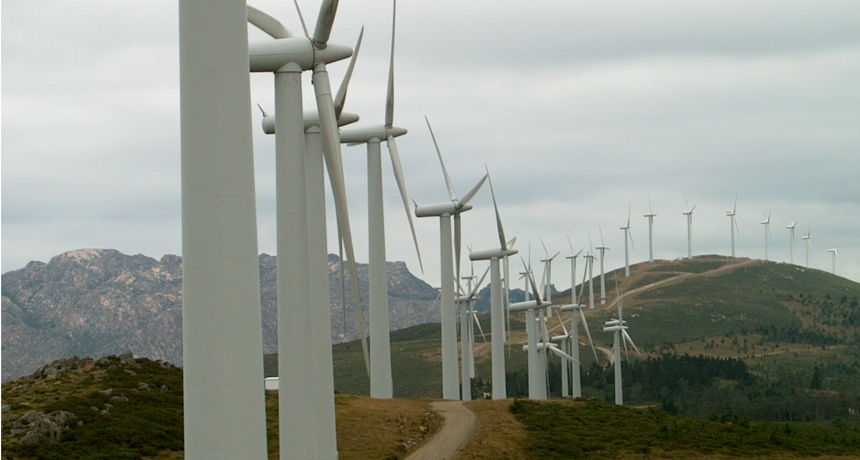
GREEN POWER Rapid adoption of alternative power production, including wind, solar and nuclear power, will be necessary to avert a climate crisis, the latest IPCC report says.
Luis Alves/Flickr (CC BY 2.0)
The best scenario for slowing global warming by 2100 requires the world to triple or quadruple by 2050 its use of renewable energy and sources of energy that emit only low amounts of greenhouse gases.
The recommendation comes from the Intergovernmental Panel on Climate Change in its third and final report of its fifth assessment. The report, which was authored by hundreds of scientists, focuses on ways to mitigate climate change. The panel released a summary of the report April 13 in Berlin, and will release the full report later this week.
The rapid swap in energy production methods would keep the planet on track to stay under a 2-degree-Celsius rise relative to preindustrial temperatures for the remainder of the century. Without the measures, greenhouse gas emissions may boost the planet’s temperature by up to 7.8 degrees Celsius. Such a rise could result in catastrophic effects on society such as flooding that displaces communities, damage to food sources via ocean acidification and the spread of organisms that carry infectious diseases.
The IPCC summary notes that global greenhouse gas emissions continue to rise. Any delays in rolling out methods to curb emissions, the summary report says, will make it more difficult to dampen the ongoing effects of climate change.
“What comes out very clearly from this report is the fact that the ‘high-speed mitigation train’ would need to leave the station soon and all of global society would have to get on board,” Rajendra K. Pachauri, chair of the IPCC and a climate and energy researcher at Yale University, said during an April 13 press conference.
Because power production emits around three-quarters of the world’s greenhouse gases, the report recommended an increase in “zero- and low-carbon energy supply.” This includes renewable energy, such as wind and solar power, plus nuclear power. The phrase also refers to fossil fuel–burning power plants that use carbon capture and storage technologies. These methods involve gathering carbon dioxide from a power plant’s exhaust gas and injecting it in deep underground geological formations where it stays trapped.
“There’s no one technology that’s going to do the whole thing or even half” when it comes to climate mitigation, says chemical engineer Howard Herzog of MIT, who is an expert on carbon capture and storage. He suggests that a diverse approach would be best.
But Herzog worries that despite the latest warning, the IPCC reports will have little impact on policy. “You’ve got this real dichotomy: The IPCC report is saying there’s going to be dire consequences, and the response is business as usual,” he says.
Despite similar warnings from the IPCC’s earlier assessments, issued in 1990 through 2007, policy action by and large did little to abate emissions. But the IPCC scientists remain optimistic. The report outlines challenges, Ottmar Edenhofer, cochair of the IPCC third report and professor of the economics of climate change at the Technical University Berlin, said in the press conference. “But,” he said, “it provides hope, modest hope.”
The first report in the fifth assessment by the IPCC, released in September 2013, reviewed climate data and found that human activities undeniably drive climate change. In March, the panel released a second report, assessing the impacts of climate change, concluding that effects will be felt worldwide. Later this year, the panel plans to release a synthesis of the three reports.







